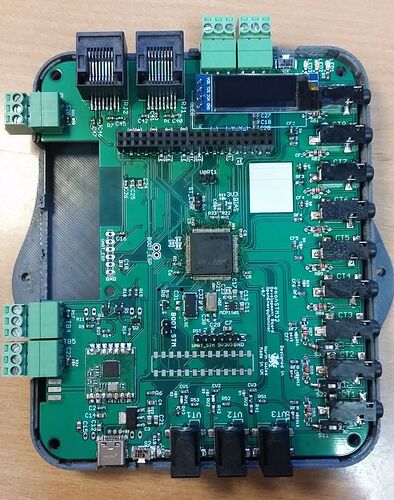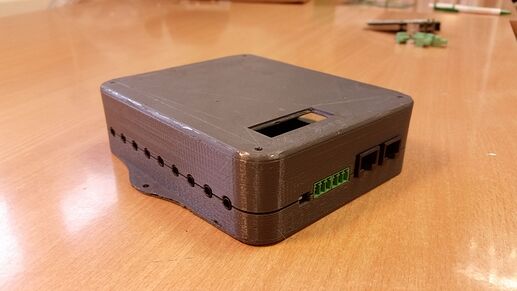Season’s greetings.
The STM32 project’s coming together. I’m excited to put this one together.
It’s now a 4-layer PCB.
Pluggable terminal blocks are a change worth a mention, very easy to use and manage wiring, for some added I/O.
USB-C now, sample provided by www.toby.co.uk, had to hunt for it from looking at the USB-C conn on the rPi4, it’s the same component and happens to be good value. Device Firmware Upgrade is something to test and try get working in the new year.
Below’s a prototype enclosure, 3d printed at Bangor Uni’s FabLab at Pontio. Some more changes to make before injection molding.
A footprint for the ESP32 module is on the underside. I haven’t started looking at using it in detail.
stm32 v0.7 eagle_v7.brd (686.6 KB) stm32 v0.7 eagle_v7.sch (1.1 MB)



